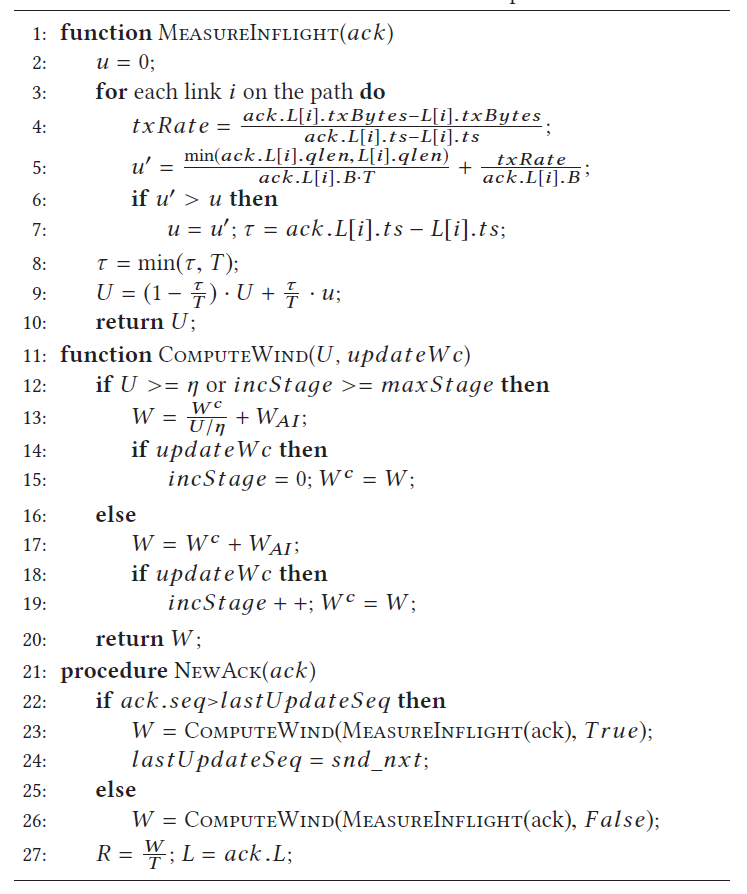HPCC leverages in-network telemetry (INT) to control traffic precisely.
Introduction
HPCC:
- adapts quickly
- keeps queue empty to maintain extremely low latency
- less parameters to adjust fairness & efficiency
motivation
the large RDMA deployments
Clos topology with three layers: ToR (top of rack, edge), Agg, Core.
Each PoD (point of delivery) is an independent RDMA domain. Diff PoD are interconnected by Core switches.
DCQCN, PFC, go-back-N is adopted.
target
- fast converge
- close-to-empty queue
- few parameters
- fairness
- easy to deployment
some considerations:
- Compared to TCP/IP, RDMA is at higher risk, since they start at line rate.
- PFC has destructive impact. 1. storms 2. deadlocks 3. suppress a large number of innocent senders
- DQCQN has a large number of parameters need to tune carefully, and there exists trade-offs like throughput vs stability; bandwidth vs latency and more.
Hopefully, INT has been enabled on many new switches, and programmable NIC is being capable.
design
INT supports some meta-data of each switches: ts, qlen, txBytes, B(link bandwidth).
HPCC is based on inflight bytes, which means the cwnd remains below BDP. In this situation, the queue remains empty.
The start speed is $W_{init}=B_{NIC}\times T$, where $B_{NIC}$is the NIC bandwidth. The sending rate is paced to avoid burst. The pacing rate is $R=W/T$, T is the base RTT. Note that in DCN, the base RTT is similar.
HPCC uses INT information to adjust the rate. MIMD+AI to converge quickly and keep fair.
For a link j, we have $I_j = \sum W_i$, where $W_i$ is the i-th flow’s window. Thus we need to keep $I_j \leq \eta \times B\times T$, where $\eta$ denotes the utilization of the link, usually 95%.
We can estimate the link usage by INT information. $I_j = qlen + txRate \times T$, and $txRate = \frac{ack_1.txBytes-ack_0.txBytes}{ack_1.ts-ack_0.ts}$. This emulation assumes the RTTs of all flows are the same.
In this way, we can find the bottleneck link. Each sender multiplicatively reduce its window by a factor of $k_j=I_j/\eta \times B\times T=U_j/\eta$, where $U_J$ is the normalized inflight bytes of link j:
Sender i react as:
$W_{AI}$ is the AI part, which is very small, $W_{AI} = W_{init} \times (1-\eta)/N$, where N is the expected maximum concurrent flows on a link.
To prevent overreaction is a single RTT, HPCC uses a reference window size $W_i^c$, updated each RTT.

As shown in the algorithm, only three parameters to set. $\eta, maxStage, W_{AI}$. $\eta$ controls the tradeoff between utilization and transient queue length. maxStage controls the tradeoff of steady state stability and the speed to reclaim free bandwidth, usually 5.$W_{AI}$ controls the tradeoff between the maximum number of concurrent flows on a link to keep near-zero queues and the speed of convergence to fairness.